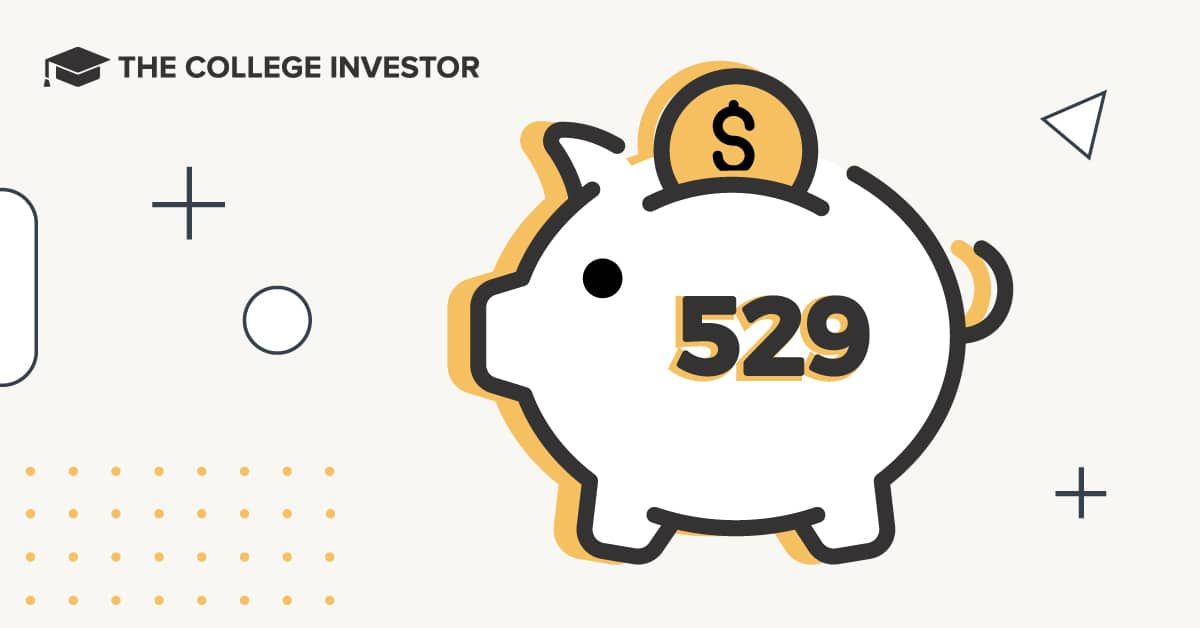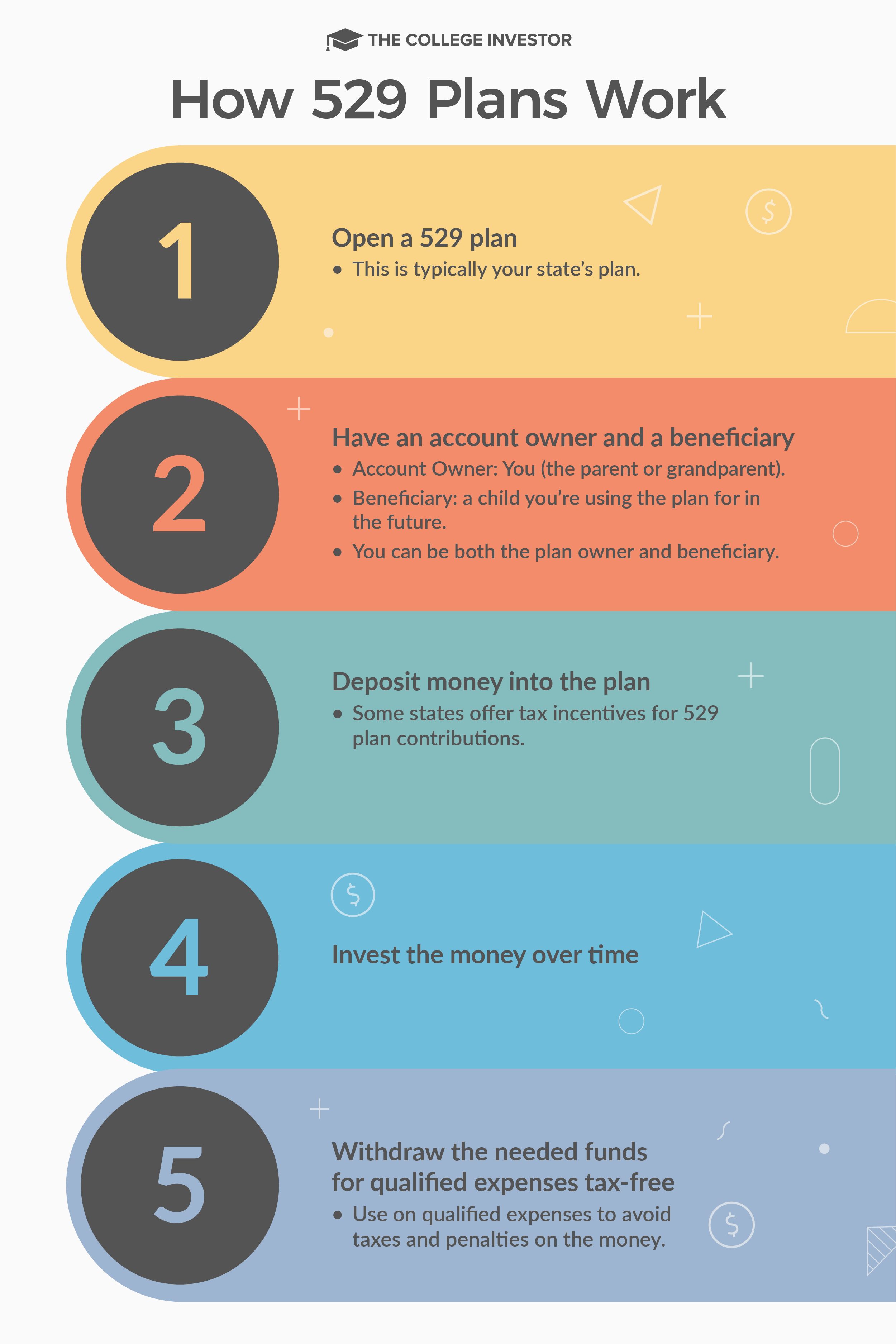
Yes, you can open a 529 plan for yourself.
By now you’re well aware of the benefits of saving for your child’s education expenses in a 529 plan. But did you know that you can also use a 529 plan to save for yourself, no matter your age?
Or, some people even start a 529 plan for themselves, with the intention of saving now for future children. Yes, you can do that too!
If you plan on furthering your education, such as going back to get a master's degree or even getting a certificate (or want to prepare for future children), here’s what you need to know about using a 529 for yourself.
How 529 Plans Work
Here's the basics of how 529 plans work. 529 plans are education savings plans - you can use them to save money for education expenses.
All 529 plans have to parts:
- The account owner
- The beneficiary
Most people setup a 529 plan as follow: the parent is the account owner, and the child is the beneficiary.
However, there is no rule that says this must be the way. You can setup the beneficiary to be nearly anyone. You can also setup the beneficiary to be yourself!
So, if you want to use a 529 plan for yourself, you'd simply set yourself up as both the account owner and account beneficiary.
So what about using it for future children? Well, you can change the beneficiary of a 529 plan at any time as long as the beneficiary is a family member (including spouses, children, decedents of children, in-laws, aunts/uncles, nieces/nephews, first-cousins and their spouses.
In the future, if you have a child, you can simply change the beneficiary to them.

The Benefits Of Using A 529 Plan
One of the biggest benefits of investing in a 529 plan is the potential tax savings.
While you won’t receive any federal income tax deductions from investing in a 529, all of your earnings will grow tax-free and you won’t have to pay taxes when you withdraw the money. (This works much like a Roth IRA.)
To top it off many states (34 in total) give their residents income tax deductions on contributions, up to a certain limit. You can find the list of states that offer tax deductions here.
529 plans can be used for qualified education expenses which include:
- Tuition (Colleges, Trade Schools, Vocational Schools, Apprenticeships)
- Books
- Room and Board
- Computers
- Equipment
- K-12 Education (in some states)
- $10,000 in Student Loan Debt (one-time, and in certain states only)
- Roth IRA Conversion (subject to the state and other limitations)
So, if you live in a state that offers a deduction, and you're planning on going back to school in the next year, consider stashing some money in a 529 plan.
The best case scenario is that you get a small tax break and your money grows a bit tax free. The worst case is that you just get the state tax break. Either way, a tax deduction is a tax break.
How Much You Can Contribute To A 529 Plan
Each state will set its own limit for how much in total can be put away in a 529 plan. However, there are no annual contribution limits set by the IRS. See this guide to 529 plan contribution limits.
Also, the federal government allows single individuals to contribute as much as $16,000 per year or $80,000 for five years and avoid gift tax consequences.
However, contributing to your own 529 plan isn't considered a gift and you can contribute as much or as little as you want. Plans like ScholarShare allow for automatic contributions, which can make it easy to save a little each month until you achieve your goal.
You can also use tools like Backer or Upromise to help you save for college.
What If You Don’t Use The Money?
If you contribute to a 529 plan but don’t use all of the money, you have a couple of options.
First, you can change the beneficiary of the plan to your child, grandchild or spouse in the future. This could give you a big head start on saving for your child’s education. You won’t have to pay any taxes or penalties for doing so.
Your second option is to withdraw the money. In this case you will have to pay taxes on the earnings plus a 10% penalty. In some situations you may also be required to pay back the state tax breaks you received.
That sounds a bit scary, but realize it's just 10% more on the earnings portion - you can always withdraw your contributions without facing any tax consequences.
Side note: you can also change the account owner once per year. This is different than changing the beneficiary. You could make the beneficiary an adult child, which then would let them leverage the 529 plan money for their children or grandchildren.
Related: How To Avoid The 529 Plan Penalty
What Else You Need to Know
In certain circumstances, saving for your own education expenses is a fantastic idea. You’ll avoid paying taxes on the earnings, reap potentially large state tax benefits depending on where you reside, and you’ll have the ability to transfer the money to a different beneficiary (like your children or future children) if you don’t use the money yourself.
But there are some other things you need to know:
- Some plans will require you to have the account for at least a year before using it.
- You need to check plan fees and expenses to make sure that saving for the short term will actually be beneficial to you.
- Only five states give tax incentives for investing in an out-of-state plan. (Those states are Arizona, Kansas, Missouri, Maine, and Pennsylvania.)
- Some investments are riskier than others so make sure that you are comfortable with where your money is invested. Research a plans performance before signing up.
If you want to get started saving in a 529 plan for yourself, you can look at plans both in and out of your state for options that best suit you. Be sure to factor in all variables so that you come out ahead.
Are you using a 529 to pay for education expenses?

Robert Farrington is America’s Millennial Money Expert® and America’s Student Loan Debt Expert™, and the founder of The College Investor, a personal finance site dedicated to helping millennials escape student loan debt to start investing and building wealth for the future. You can learn more about him on the About Page or on his personal site RobertFarrington.com.
He regularly writes about investing, student loan debt, and general personal finance topics geared toward anyone wanting to earn more, get out of debt, and start building wealth for the future.
He has been quoted in major publications, including the New York Times, Wall Street Journal, Washington Post, ABC, NBC, Today, and more. He is also a regular contributor to Forbes.
Editor: Clint Proctor Reviewed by: Mark Kantrowitz